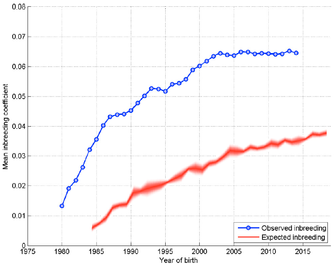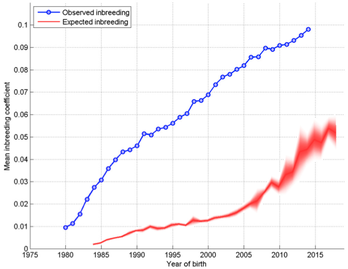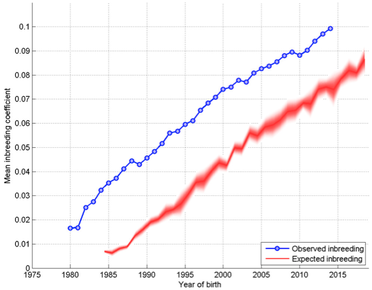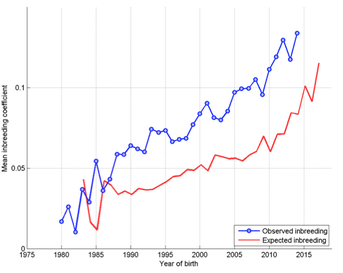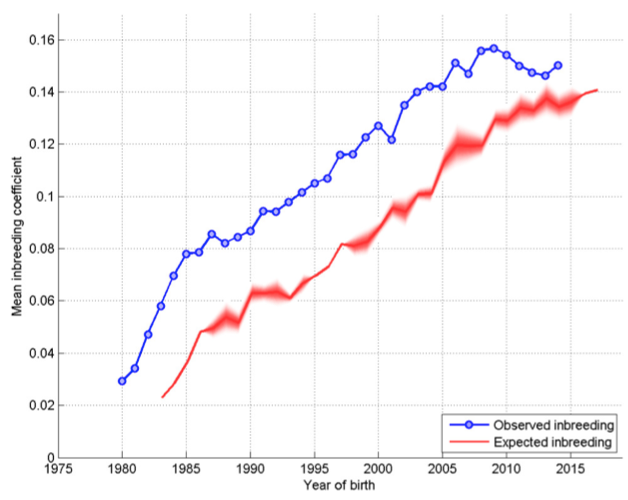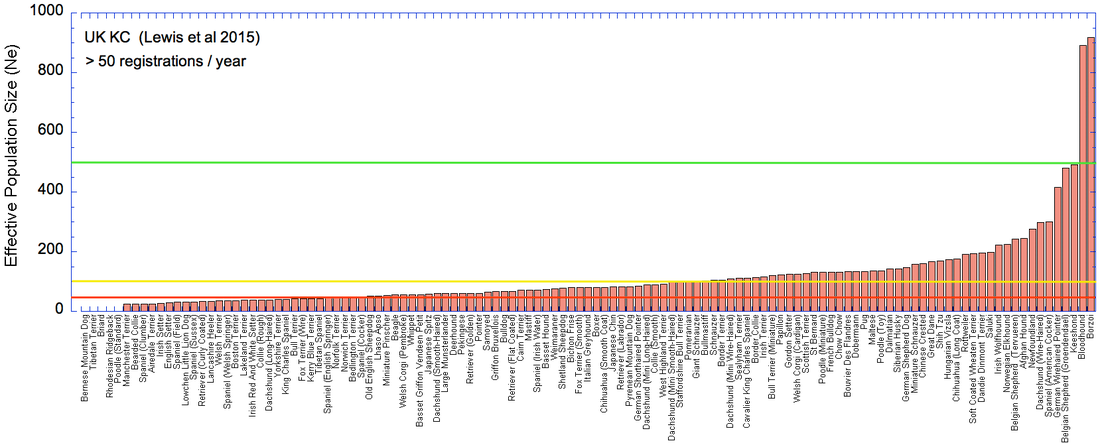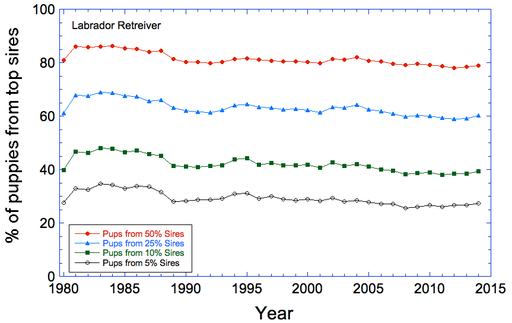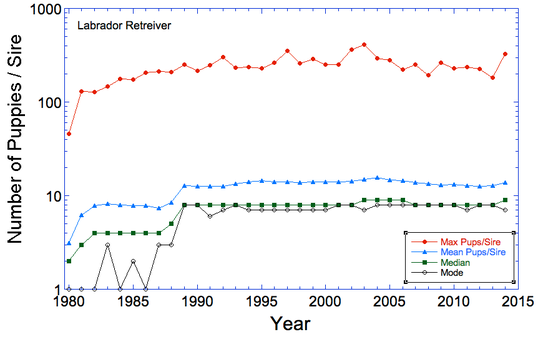Just published today in Canine Genetics and Epidemiology is a study of the population statistics and genetic diversity of all 215 breeds registered by the Kennel Club, using data from the pedigree database from 1980-2014. The paper is a welcome addition to the literature, updating and eclipsing the earlier (and epic at the time) study by Calboli et al in 2008.
If you've been wondering if you should take a course in population genetics, this paper will convince you. (Check out the courses that ICB offers here.) The health of the dogs we breed depends fundamentally on the quality of the gene pool, and assessments of the genetic health of the gene pool are necessarily based on population-wide analyses. So there is much here about effective population size (Ne), which is determined by the rate of change in the average level of inbreeding in the population.
At the core of the paper are data for inbreeding over the years since 1980. Unfortunately, the data for individual breeds are not in the paper, or even in the supplementary documents available from the publisher (where they would be available in perpetuity), but instead are available as individual pdf documents on the Kennel Club website. If the address to that web page should ever change (and surely it will), the link published in the manuscript will be useless. So, download your favorite breed now, just to be safe.
| Summarizing their findings about inbreeding, they say: "The trend over all breeds was for the rate of inbreeding to be highest in the 1980s and 1990s, tending to decline after 2000...to sustainable levels, with some modest restoration of genetic diversity in some cases." While there are breeds in which inbreeding does stabilize (e.g., the Labrador Retriever; figure on the right), it is certainly not the case that this is a general pattern across all breeds. |
Upper: English Cocker (left), English Springer (right)
Lower: Akita (left) , Bull Terrier (right)
Below I have graphed the data for Ne (from the Supplementary documents) for those breeds in which there were more than 50 registrations per year; that is, the more populous breeds. I have superimposed lines at Ne = 50 (red), Ne = 100 (yellow), and Ne = 500 (green), to correspond with the various rules of thumb under debate.
| Download a larger version of this figure: |
| ||
I would have to say that, after a few hours of fiddling with the available data, the paper's summary is rosier than the actual picture. The statement that levels of inbreeding are looking much better since 2000 is quite misleading - it could simply be an artifact of the importation of unrelated dogs, and there are plenty of breeds in which the rate of inbreeding has stayed on the same trajectory for decades and could very well continue. The number of breeds with effective population sizes well into the danger zone should be a heads up for breeders, especially in those breeds that could increase Ne with the simple strategy of breeding a larger fraction of available dogs and balancing the ratio of males to females (as I discuss here).
The caveat here is that these data are for an artificial population - the dogs registered with The Kennel Club. Before 2000, it was effectively a closed population, and since then has the addition of imports with only 3 generations of pedigree information, which makes them appear in analyses like this to be new, unrelated founders. At least The Kennel Club should be congratulated for including geneticists on their staff who have access to the pedigree data and the expertise necessary for these analyses. What a pity that the AKC does not do the same.
You can read The Kennel Club's press release about the study here.
| ||||
To learn more about the genetics of dogs, check out
ICB's online courses
Next online course coming up...
*** Understanding Hip and Elbow Dysplasia ***
Starts 1 October 2015
***************************************
Visit our Facebook Groups
ICB Institute of Canine Biology
...the latest canine news and research
ICB Breeding for the Future
...the science of animal breeding
